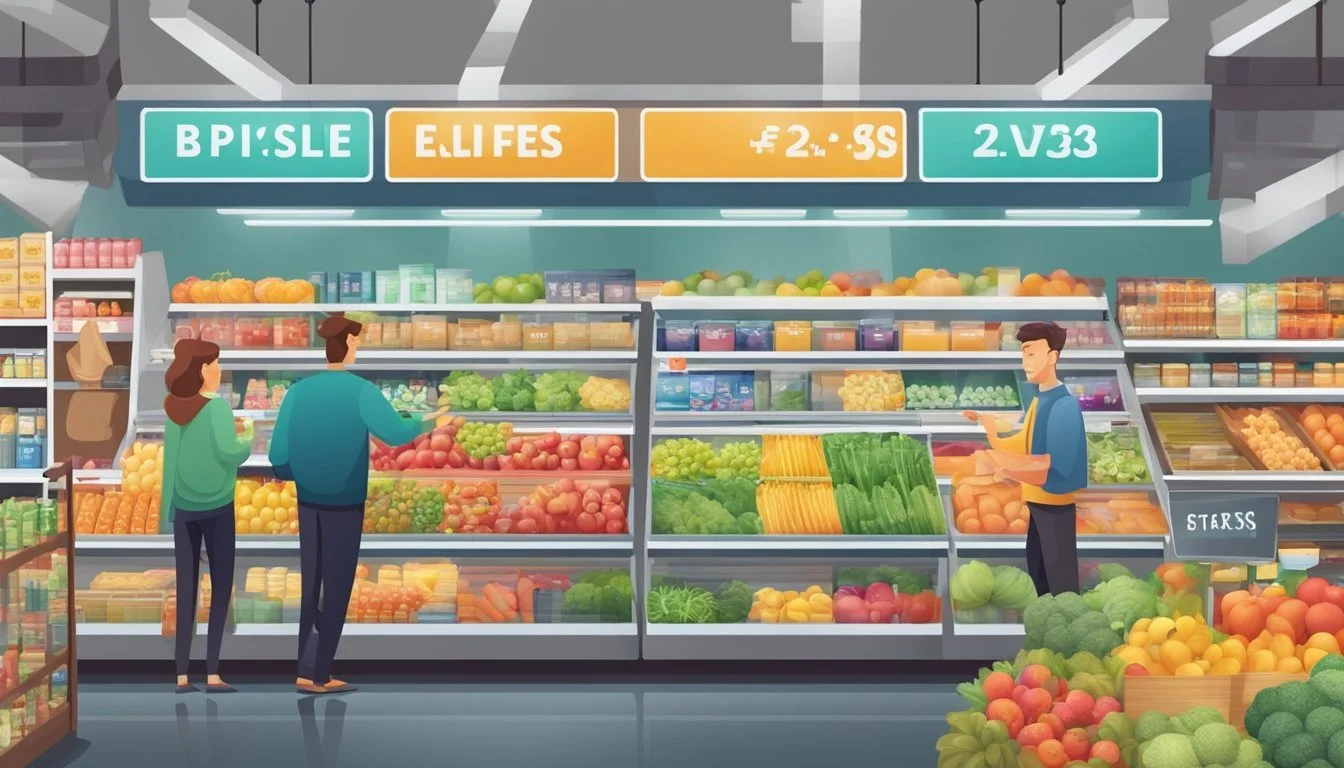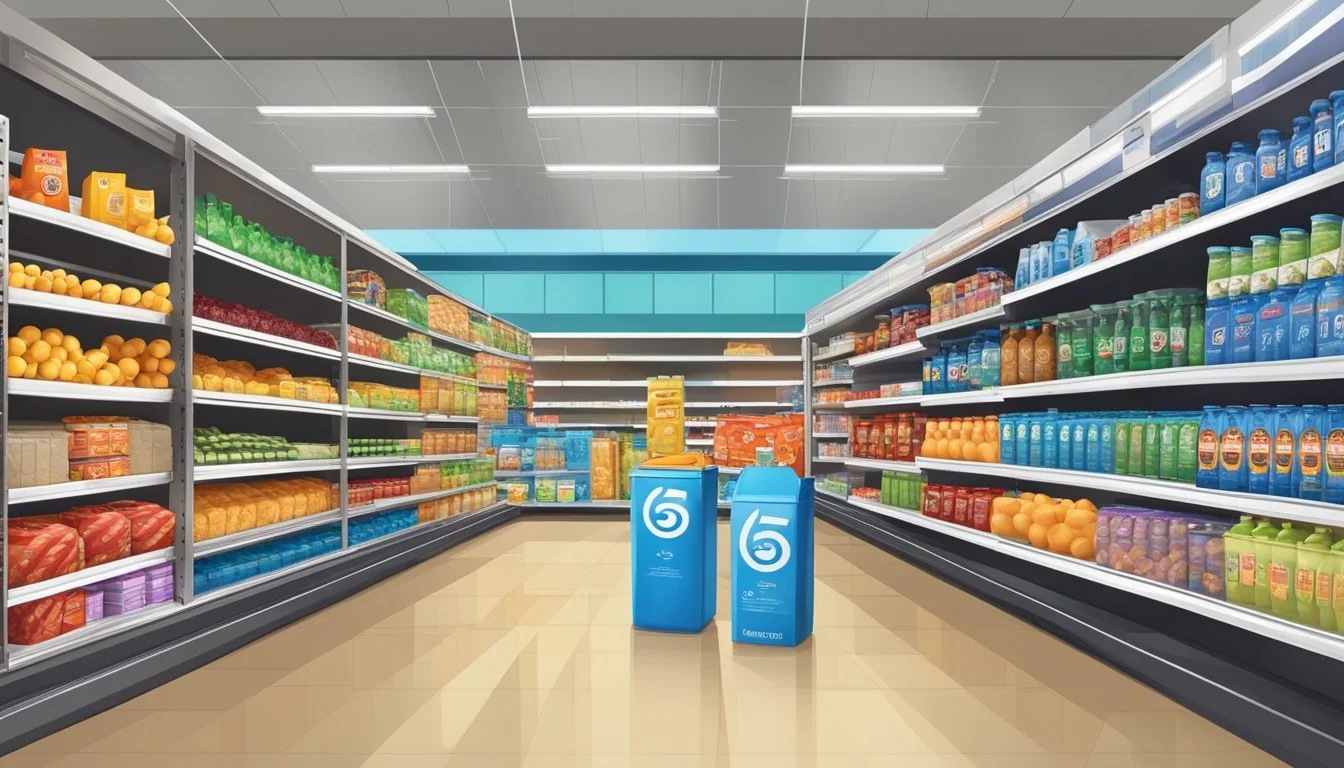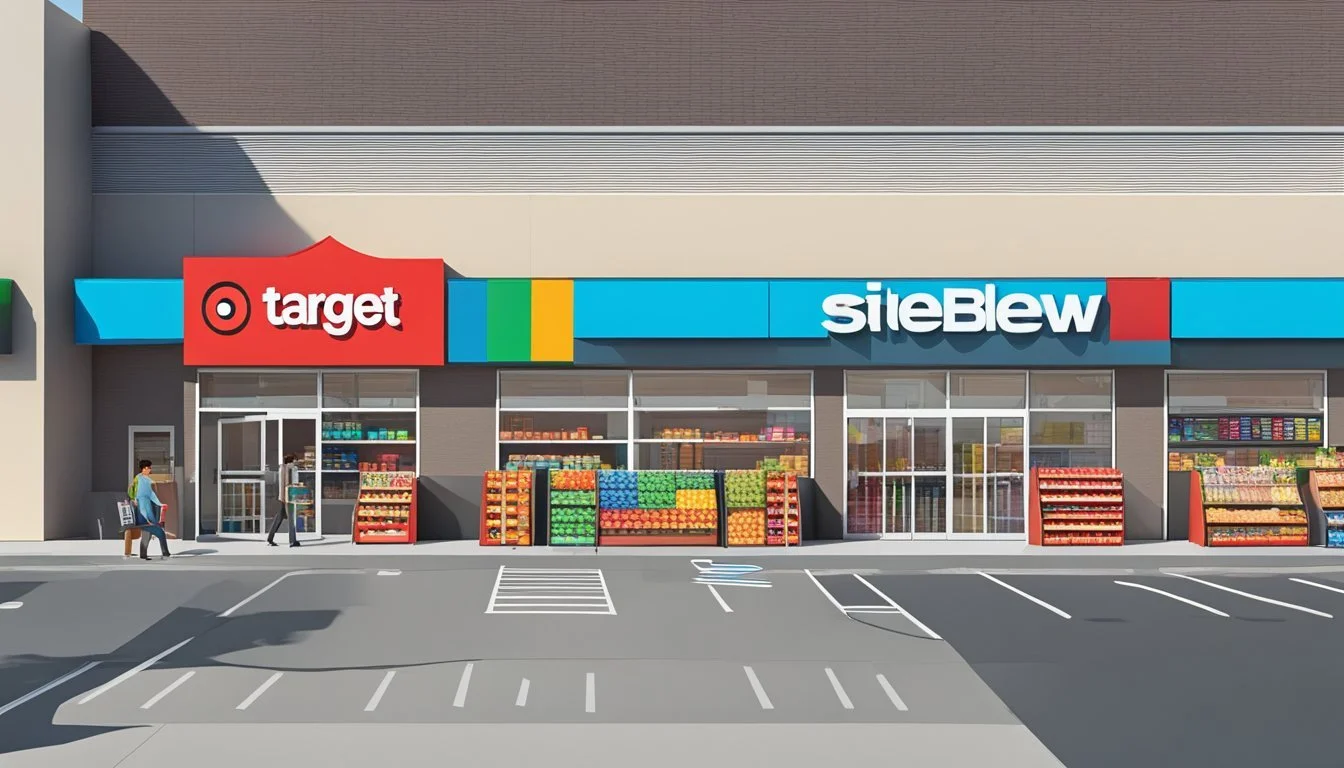Target vs Five Below
Comparing Price, Selection, and Quality
Target and Five Below are two popular retail chains that offer different shopping experiences. While both stores attract budget-conscious consumers, they cater to distinct product categories and target demographics.
Target is primarily a large-format general merchandise retailer with a significant grocery section, while Five Below focuses on offering trendy products at $5 or less. This fundamental difference shapes their grocery offerings and overall shopping environments.
Target's grocery department provides a wide range of food items, including fresh produce, dairy, meat, and pantry staples. Five Below, on the other hand, has a limited selection of non-perishable snacks and beverages. Shoppers looking for a full grocery run will find Target more suitable, whereas Five Below is better for quick snack purchases or party supplies.
Company Overviews
Target and Five Below are major players in the retail landscape, each with distinct business models and product offerings. These companies cater to different consumer needs and market segments.
Target Corporation Profile
Target Corporation is a leading American retail giant founded in 1902. The company operates over 1,800 stores across the United States, offering a wide range of products including groceries, clothing, electronics, and home goods. Target's grocery business generates approximately $20 billion in annual sales, surpassing many regional grocers.
Target's "Expect More. Pay Less." slogan reflects its focus on providing quality products at competitive prices. The retailer emphasizes customer-driven innovations and one-stop shopping convenience. Its stores feature clean layouts, trendy designs, and exclusive brand partnerships.
Five Below Inc: An Overview
Five Below, founded in 2002, is a rapidly expanding discount store chain. The company specializes in selling products priced at $5 or less, targeting teens, tweens, and value-conscious shoppers. Five Below offers a variety of items including toys, games, accessories, and some food products.
With ambitious growth plans, Five Below aims to triple its store count by 2030 and double earnings by 2025. The retailer's unique pricing strategy and focus on trend-driven merchandise sets it apart from traditional grocery stores and big-box retailers.
Five Below's stores are typically smaller than Target's, with a vibrant, youth-oriented atmosphere. The company's success lies in its ability to quickly adapt to changing consumer trends and maintain low prices.
Product Range and Quality
Target and Five Below offer distinct product ranges and quality levels, catering to different shopping needs. Their grocery selections, fresh produce offerings, organic options, and brand choices vary significantly.
Assortment of Groceries
Target provides a comprehensive grocery selection, including fresh produce, dairy, meat, bakery items, and pantry staples. Their food aisles feature a mix of everyday essentials and specialty products. Target's grocery department typically occupies a sizable portion of the store.
Five Below, on the other hand, has a limited grocery selection. Their food offerings primarily consist of snacks, candies, and beverages. The focus is on affordable, grab-and-go items rather than ingredients for meal preparation.
Target's wider range allows for one-stop shopping, while Five Below's selection is more suited for quick treats or party supplies.
Quality of Fresh Produce
Target stocks a variety of fresh fruits and vegetables. Their produce section often includes both conventional and organic options. The quality of Target's produce is generally consistent, with regular restocking to ensure freshness.
Five Below does not typically offer fresh produce. Their food items are primarily shelf-stable or packaged goods. This difference in product range makes Target the clear choice for shoppers seeking fresh fruits and vegetables.
Target's commitment to fresh produce quality is evident in their display methods and frequent rotation of stock.
Availability of Organic Selections
Target has made significant strides in expanding its organic offerings. Their Good & Gather brand includes many organic options across various food categories. Shoppers can find organic produce, dairy, meats, and pantry staples at Target.
Five Below does not focus on organic products. Their food selection is primarily conventional, with an emphasis on popular snack brands and candy. The absence of organic options at Five Below makes it less suitable for health-conscious consumers or those with specific dietary preferences.
Target's organic range caters to growing consumer demand for natural and sustainably sourced foods.
In-House and National Brand Offerings
Target balances its product mix with both in-house and national brands. Their Good & Gather line covers a wide range of grocery items, offering quality products at competitive prices. Target also stocks well-known national brands across all food categories.
Five Below primarily carries national brand snacks and candies. Their focus is on offering these familiar brands at discounted prices. The store's own-brand presence in the food category is minimal.
Target's strategy provides more choice, allowing customers to compare in-house and national brands side-by-side. This variety in brand offerings and price points gives Target an edge in meeting diverse consumer preferences.
Pricing and Value for Money
Target and Five Below employ distinct pricing strategies that impact their value propositions. While both aim to offer affordable options, their approaches differ in key areas.
Comparison of Everyday Prices
Target focuses on competitive pricing across a wide range of grocery items. Their store brand, Good & Gather, often undercuts name brands by 10-30%. Five Below, true to its name, caps most items at $5 or less.
Target's grocery selection includes fresh produce, meats, and pantry staples at mid-range prices. Five Below offers a limited selection of packaged foods and snacks at ultra-low price points.
For basic pantry items like pasta or canned goods, Five Below may edge out Target. However, Target provides better value on fresh foods and household essentials.
Deals and Discounts Offered
Target runs weekly promotions and offers additional savings through its Circle rewards program. Members receive personalized coupons and earn 1% back on purchases.
Five Below relies less on traditional sales, instead focusing on consistently low prices. They occasionally feature limited-time "Five Beyond" items priced up to $10.
Target's Cartwheel app provides digital coupons and stackable discounts. Five Below lacks a comparable digital savings platform.
Price Match Policy
Target's comprehensive price match policy covers both in-store and online competitors, including Amazon. They'll match prices within 14 days of purchase.
Five Below does not offer price matching, citing their already low price points as justification.
Target's policy extends to their own online prices, ensuring customers get the best deal regardless of shopping method. This flexibility adds significant value for price-conscious shoppers.
Shopping Experience
Target and Five Below offer distinct shopping experiences tailored to different consumer needs. Their approaches to store layout, checkout processes, customer service, and additional features shape how customers interact with each retailer.
Store Layout and Aisles
Target stores feature wide, well-lit aisles organized into clearly defined departments. The layout typically follows a racetrack design, guiding shoppers through various sections. Home goods, apparel, and electronics occupy prominent spaces, while groceries are often situated towards the back.
Five Below stores have a more compact footprint. Aisles are narrower but still navigable. Products are arranged by category, with items grouped by price point. The store design encourages browsing, with eye-catching displays and vibrant signage highlighting new or seasonal items.
Checkout Convenience
Target provides multiple checkout options. Traditional cashier lanes are complemented by self-checkout kiosks, catering to shoppers with varied preferences. During peak hours, Target often opens additional registers to manage queues efficiently.
Five Below typically relies on cashier-operated registers. The number of open lanes can vary based on store traffic. While the checkout process is generally quick due to the simplified pricing structure, lines may form during busy periods.
Customer Service Quality
Target emphasizes customer service training. Employees are generally knowledgeable about store layout and product locations. Many Target stores have dedicated service desks for returns, exchanges, and general inquiries.
Five Below maintains a more hands-off approach. Staff are available to assist but may be less numerous than at Target. The focus is on maintaining a fun, casual atmosphere rather than providing extensive personalized assistance.
Additional Services and Features
Target offers several additional services. Many locations include Starbucks cafes, providing a spot for shoppers to relax. The retailer's partnership with Shipt enables same-day delivery for a wide range of products.
Five Below focuses on its core retail experience. While lacking in-store dining options or delivery services, the retailer occasionally hosts special events or product demonstrations, particularly for new or trending items.
Additional Services
Target and Five Below offer distinct additional services to enhance the shopping experience. Target provides a wider range of amenities, while Five Below focuses on its core retail offerings.
Home Delivery and Online Shopping
Target excels in home delivery and online shopping options. The retailer partners with Shipt to offer same-day delivery on groceries, household essentials, and more. Target's website and mobile app allow customers to browse and purchase items for delivery or in-store pickup.
Free shipping is available for orders over $35 or when using a Target RedCard. The company's robust online presence includes detailed product information, customer reviews, and personalized recommendations.
Five Below's online shopping capabilities are more limited. The discount retailer offers e-commerce through its website, but same-day delivery is not available. Shipping is free for orders over $75.
In-Store Departments and Facilities
Target stores feature a variety of additional departments and facilities. Many locations include:
Pharmacies with prescription services and health consultations
Starbucks cafes for a quick coffee or snack
Optical centers for eye exams and glasses
Mobile phone services and electronics departments
Target's return policy is generally more flexible, allowing returns within 90 days for most items. Some locations also offer drive-up services for easy order pickup.
Five Below stores have a more streamlined layout focused on their core merchandise categories. They typically do not include additional facilities like pharmacies or cafes. The return policy at Five Below is more restrictive, usually allowing exchanges or returns within 14 days of purchase.
Corporate Responsibility and Public Image
Target and Five Below take different approaches to corporate responsibility, reflecting their distinct market positions and business models. Both companies strive to maintain positive public images through various initiatives and community engagement efforts.
Health and Safety Initiatives
Target prioritizes customer and employee health through rigorous safety protocols in stores and distribution centers. The company implemented enhanced cleaning procedures and contactless shopping options during the COVID-19 pandemic. Target also offers a wide range of healthy food options and promotes wellness through its pharmacy services and health-focused product lines.
Five Below focuses on product safety, ensuring that its low-priced items meet quality standards. The company conducts regular testing and inspections to comply with safety regulations. While Five Below does not have a dedicated health initiative, it maintains clean store environments and follows industry-standard safety practices.
Community Involvement
Target actively engages in community support through its corporate giving program. The company donates 5% of its profits to local communities, focusing on education, wellness, and family stability. Target partners with organizations to provide disaster relief and supports youth development programs.
Five Below's community involvement centers on its charitable foundation, which supports youth-focused organizations. The company organizes in-store fundraising campaigns and encourages employee volunteerism. Five Below also donates products to local charities and schools.
Both retailers strive to create positive customer experiences through friendly service and clean store environments. Target's broader range of products and services allows for more comprehensive community engagement, while Five Below focuses on youth-oriented initiatives aligned with its brand identity.








